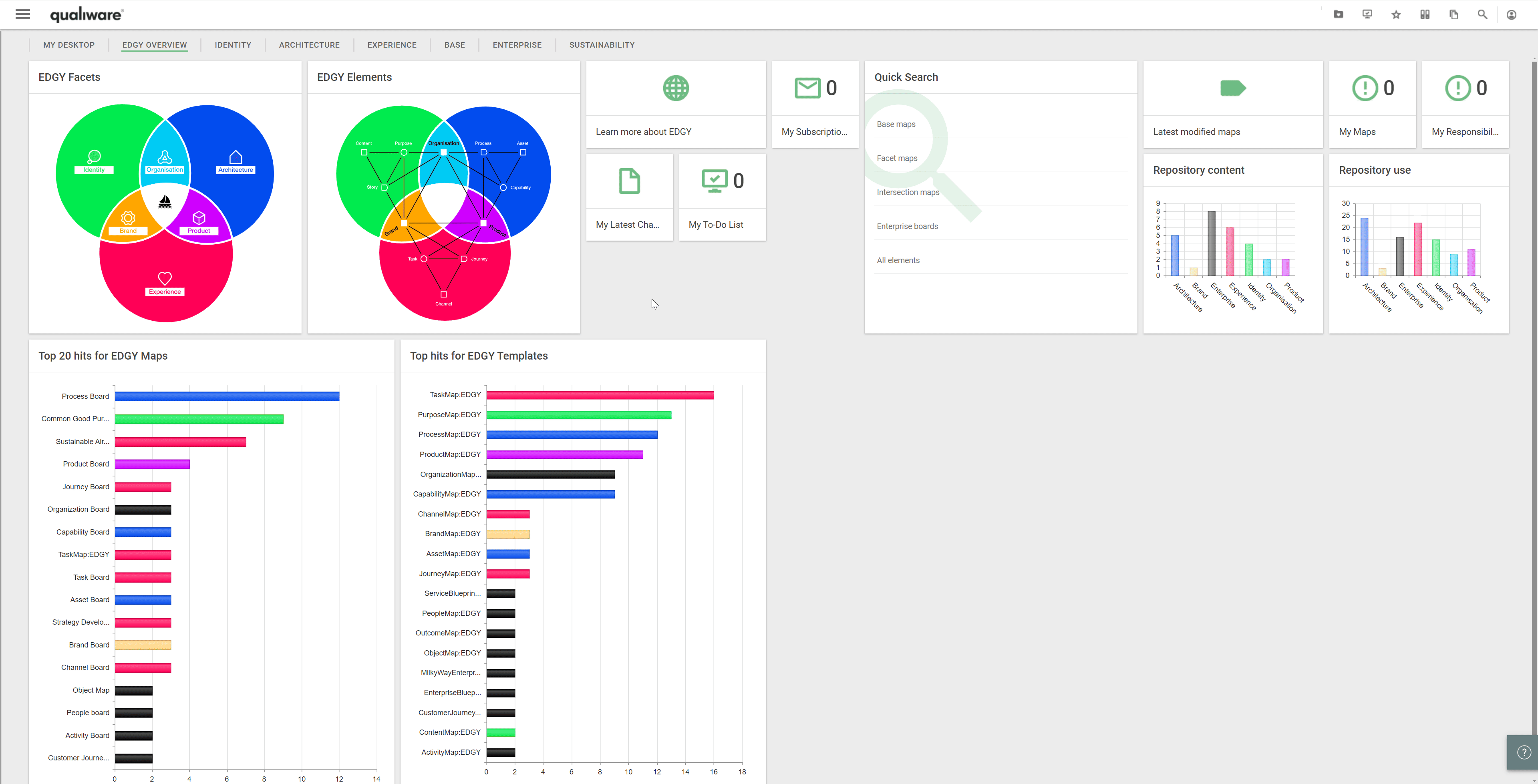Why do organisations need Business Capability Management (BCM)?
Business Capabilities are imperative for organizations as they represent the skills, processes, resources, technologies, and competencies that enables them to achieve the strategic objectives and deliver value to its customers. Business Capabilities are in essence answering the question of “What is a company doing?” to achieve its Business Model and strategic Goals that have been set by the organization.
When organizations have a clear overview of their Business Capabilities, they may find an increased ability to:
- Adapt and be agile ✅
- Allocate resources where necessary ✅
- Innovate to stay ahead of the curve ✅
- Assess areas of the business that are a risk in realizing the Business Model ✅
All this ensures that Enterprise Architecture and Business Architecture can evolve and be optimized.
Business Capabilities in QualiWare
In QualiWare, Capabilities can be linked to areas across the business through the relevant templates. This makes Capabilities actionable by tying all relevant business operations, resources, and information to the relevant Capabilities.
To map out Business Capabilities you will often formalize a Business Capability Map/Model. A Business Capability Map which allows people from across the business to see the structural elements of what the organization is doing, how important each element is and how well it is performing in executing it. The Business Capability Map enhances decision-making across departments so that the business is aligned and can be optimized strategically and operationally in the future.
Who to involve when defining Business Capabilities?
There are various opinions on the matter of who to involve, when defining the Business Capabilities of an organization. Some advocate for a top-down approach, where other approaches emphasize a holistic inclusion of actors in the organization that make up ‘What’ the organization is delivering to maintain a competitive advantage and produce its products.
Oftentimes the Business Capabilities are made from a top-down approach with stakeholders who come from more senior business leaders and specialized technical roles. This is an enterprise-level perspective. However, other frameworks such as EDGY emphasize the need for Architectural thinking to be applied by multiple business experts across the business as part of a collaborative co-design process. EDGY argues that failing to realize Business Capabilities more holistically will result in IT heavy capability maps rather than Business Capability Maps. This is a more bottom-up approach, that allows an enterprise-wide Business Capability map. However, it is generally advised that the bottom-up approach need to be strongly guided by strong governance and senior leadership support.
The organization must internally make decisions on who makes and how the Business Capabilities are defined. Oftentimes a mixed approach is feasible where initially a top-down approach may be driven in the first instance of the formulation of capabilities, where at later stages a bottom-up approach can be included in the co-creation of business capabilities from across the business that creates the enterprise-wide business capability map.
QualiWare supports working with Business Capabilities from various viewpoints and templates in BusinessCapability, EDGYCapability and ArchimateCapability.
Difference between Business Capabilities and Processes
Business Capabilities, concerned with “what” an organization is doing must not be confused with Business Processes, which explain the “How” an organization is performing said Business Capabilities. The Business Capability is there for realized by skills, processes, technology and resources. Business Capabilities is to be seen in a strategic view, while Processes are what drives the transformation.
